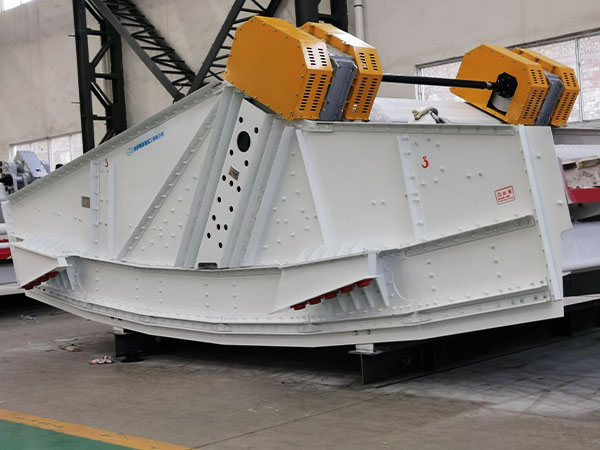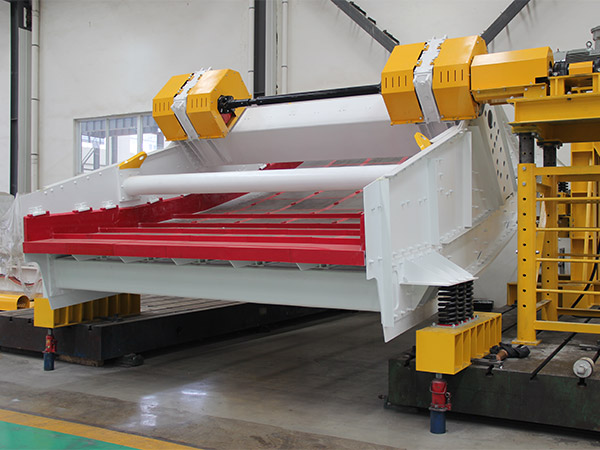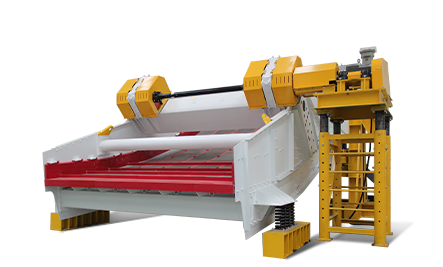The linear vibrating screen is mainly composed of a screen box, a mesh frame, a screen mesh, a vibration motor, a motor base, a damping spring, and a bracket. Using the vibrating screen exciter as the vibration source, the material is thrown up on the screen while moving forward in a straight line. The material enters the inlet of the screening machine evenly from the feeder and produces several specifications through the multi-layer screen. The oversize and undersize items are respectively discharged from their respective outlets. It has low energy consumption, high output, simple structure, easy maintenance, fully enclosed structure, no dust spillage, automatic discharge, and is more suitable for assembly line operations.
Features of linear vibrating screen
(1) The design of the screen machine is exquisite and easy to assemble. One person can operate the screen machine.
(2) Compared with other related vibrating screens, it has a larger screening area and effective processing capacity.
(3) The unique structure design of the screen makes it easy and quick to replace the screen (only 3 to 5 minutes). In addition, this design allows the use of various material screens.
(4) The mother net completely supports the fine mesh, so the fine mesh can have a longer lifespan, and the use of fine mesh consumables is reduced, which can reduce many costs for the long-term production process.
(5) The linear vibrating screen has the characteristics of high screening accuracy, simple structure, convenient maintenance, low energy consumption, low noise, good sealing, reduced dust pollution, long screen life, and can be used for automated operations in assembly line production.
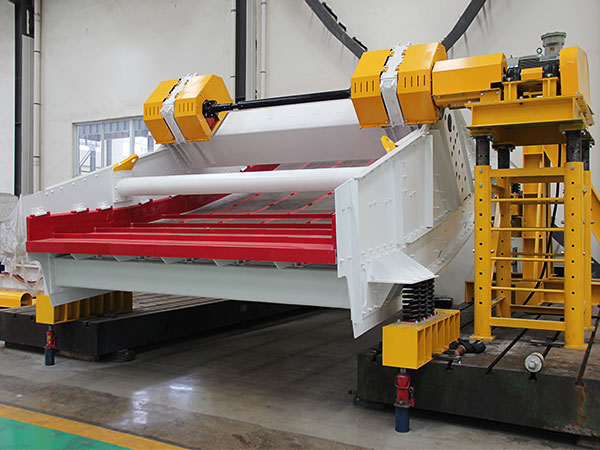
Working principle of linear vibrating screen
The linear vibrating screen is driven by dual vibrating motors. When the two vibrating motors are running synchronously and in opposite directions, the exciting force generated by the eccentric blocks cancels each other out in the direction parallel to the motor axis, and stacks in the direction perpendicular to the motor axis to form a resultant force, so the material is in the linear vibrating screen The motion trajectory on the machine is a straight forward parabolic motion. The two motor shafts have an inclination angle relative to the screen surface. Under the combined force of the exciting force and the material’s self-gravity, the materials are thrown up and jump forward on the screen surface for linear motion, so as to achieve the purpose of screening and grading the materials.
Linear vibrating screen installation
1. Screen box: It is welded from several steel plates with different thicknesses, with certain strength and rigidity, and is the main part of the screen machine.
2. Mesh frame: It is made of wood with less deformation, which is used to keep the screen flat and tight to achieve normal screening. If the specific gravity is large or the output is large, the metal screen frame can be used.
3. Screen: Use a composite national standard stainless steel screen.
4. The use and maintenance method of vibrating screen exciter can refer to its instruction manual.
5. Motor pedestal: The motor pedestal of the standard type (the motor is installed under the screen box) is movable. The connecting screws must be tightened before use, especially the new sieve must be tightened repeatedly three days before the trial to avoid loosening. accident.
6. Vibration damping spring: prevents vibration from being transmitted to the ground and supports the full weight of the screen box. When installing, the spring must be perpendicular to the ground.
7. Bracket: It is composed of channel steel and supports the main body of the vibrating screen. The pillars must be perpendicular to the ground during installation, and the channel steels under the two pillars should be parallel to each other. Rubber springs have been tested for static stiffness before they leave the factory. Springs with the same (or similar) stiffness should be selected and placed on different supporting positions of the same vibrating screen.
When installing, place the rubber spring on the lower support seat, make the boss on the support seat enter the inner hole of the spring, and then hoist the main body. Make sure that the inner hole of the rubber spring is centered on the boss of the support plate. The box is dropped vertically and placed on the rubber spring. At this time, the height of the rubber spring at each support point should be the same, and the error should not be greater than 2mm. The connection of each part of the sieve machine must be firm and reliable, all bolts must not be loose, and there must be no abnormal sound at each part. The small gap between the vibration-absorbing part on the main body and the surrounding fixed objects is 30-50mm.
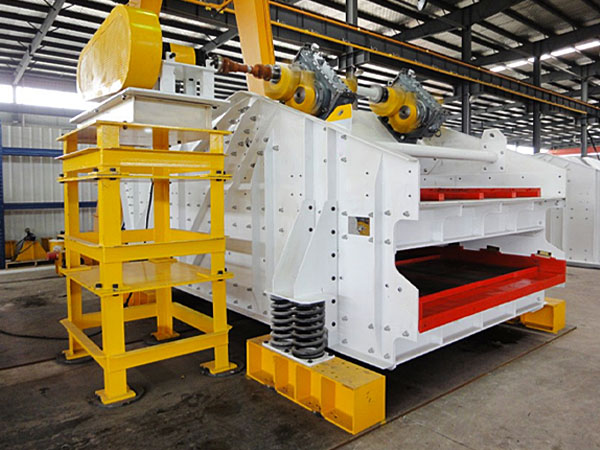
Regular inspection and maintenance of linear vibrating screen
1. The linear vibrating screen should be equipped with electrical protection devices.
2. In the early stage of operation, check the anchor bolts at least once a day to prevent loosening.
3. When the motor rotation direction does not meet the requirements, adjust the power phase sequence.
4. The motor should be well lubricated. Replenish lithium grease (ZL-3) every two weeks or so. When refueling, add an appropriate amount of lithium grease through the oil cup. When using sealed bearings, the motor is not equipped with an oil cup.
5. After the equipment has been running for 1500 hours, the bearings should be checked and replaced immediately if there is serious damage.
6. When the linear vibrating screen is used again after being parked for a long time, the insulation resistance should be measured. It should be greater than 0.5 megohm for 500V megohmmeter measurement.
Before starting the linear vibrating screen, check whether there are obstacles that hinder the operation of the screen machine and whether the connecting bolts are fastened everywhere, especially the fixing bolts of the exciter, support seat, and screen plate should be tightened again. Check whether the rotation directions of the two vibration motors or exciters are opposite. If the rotation directions are the same, change the power connection of one motor so that the rotation directions of the two motors are opposite. After 4 hours of continuous operation, measure the bearing temperature. The bearing temperature should not exceed 75°C. Before the screen machine is stopped, the feeding should be stopped first, and then stop after the screen surface material is finished. After the pause, clean up the materials and debris on the screen surface in time. The vibrating motor or vibrating screen exciter should be refueled once after 3 months of use, minor repairs every six months, and major repairs every year.


